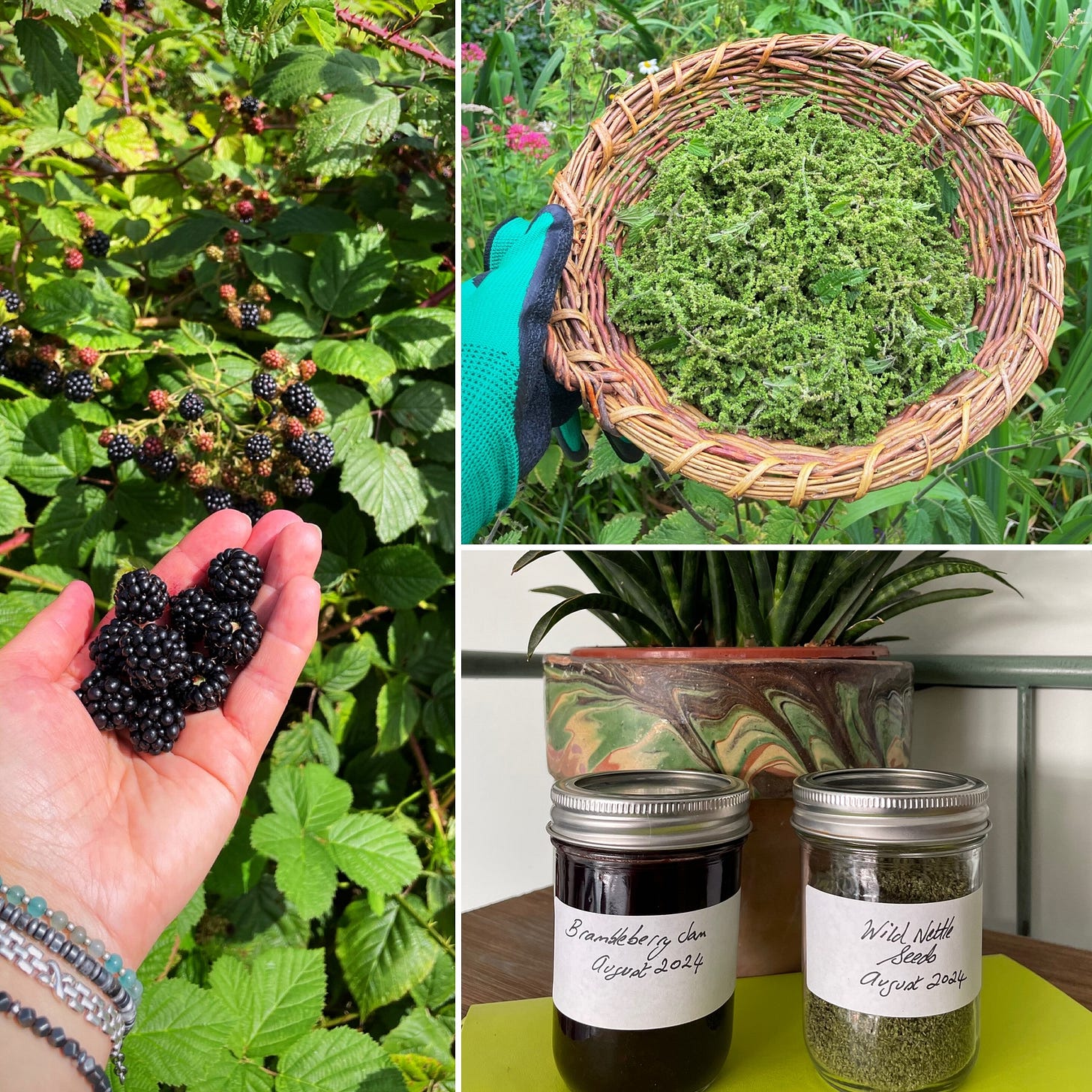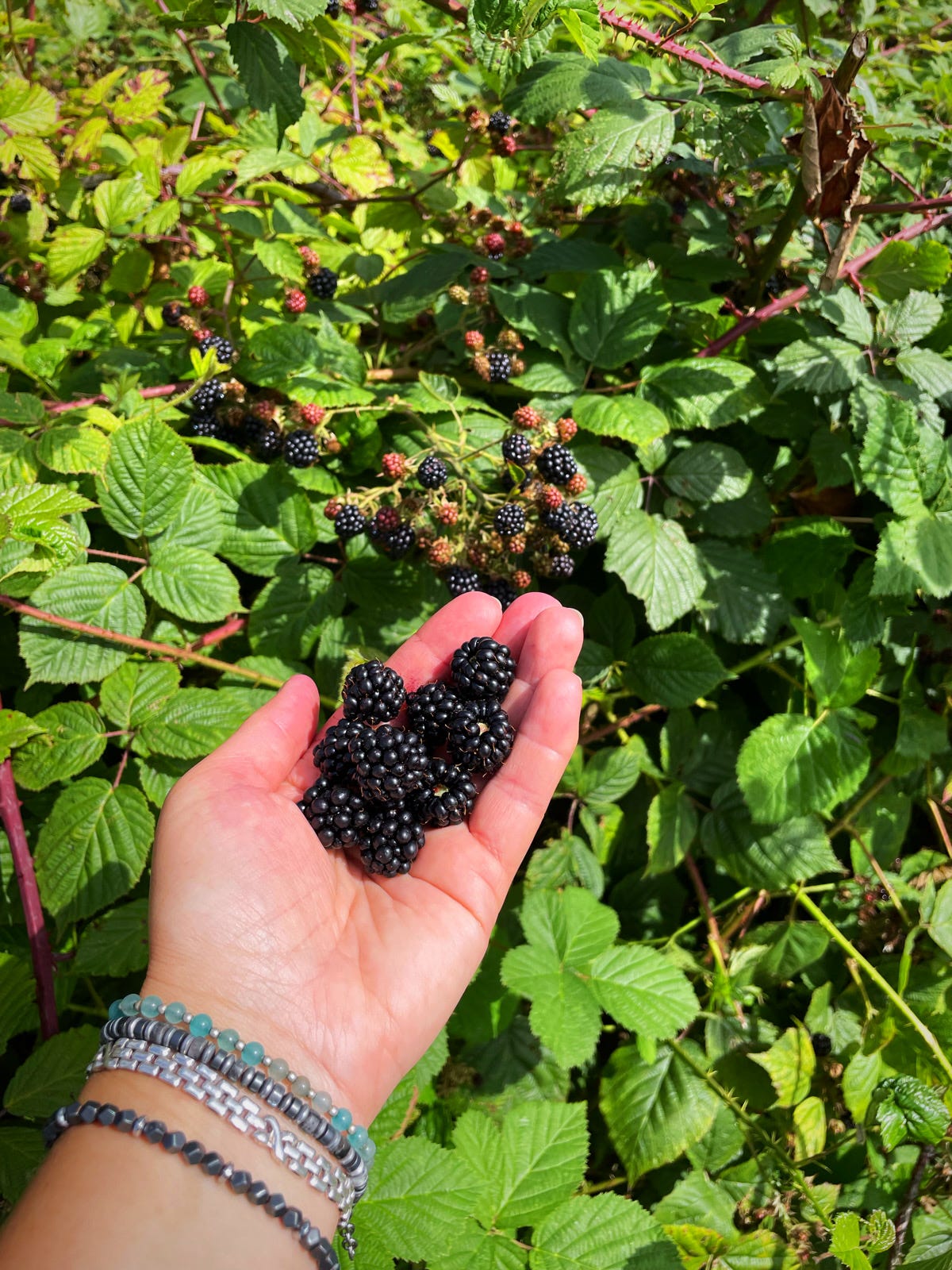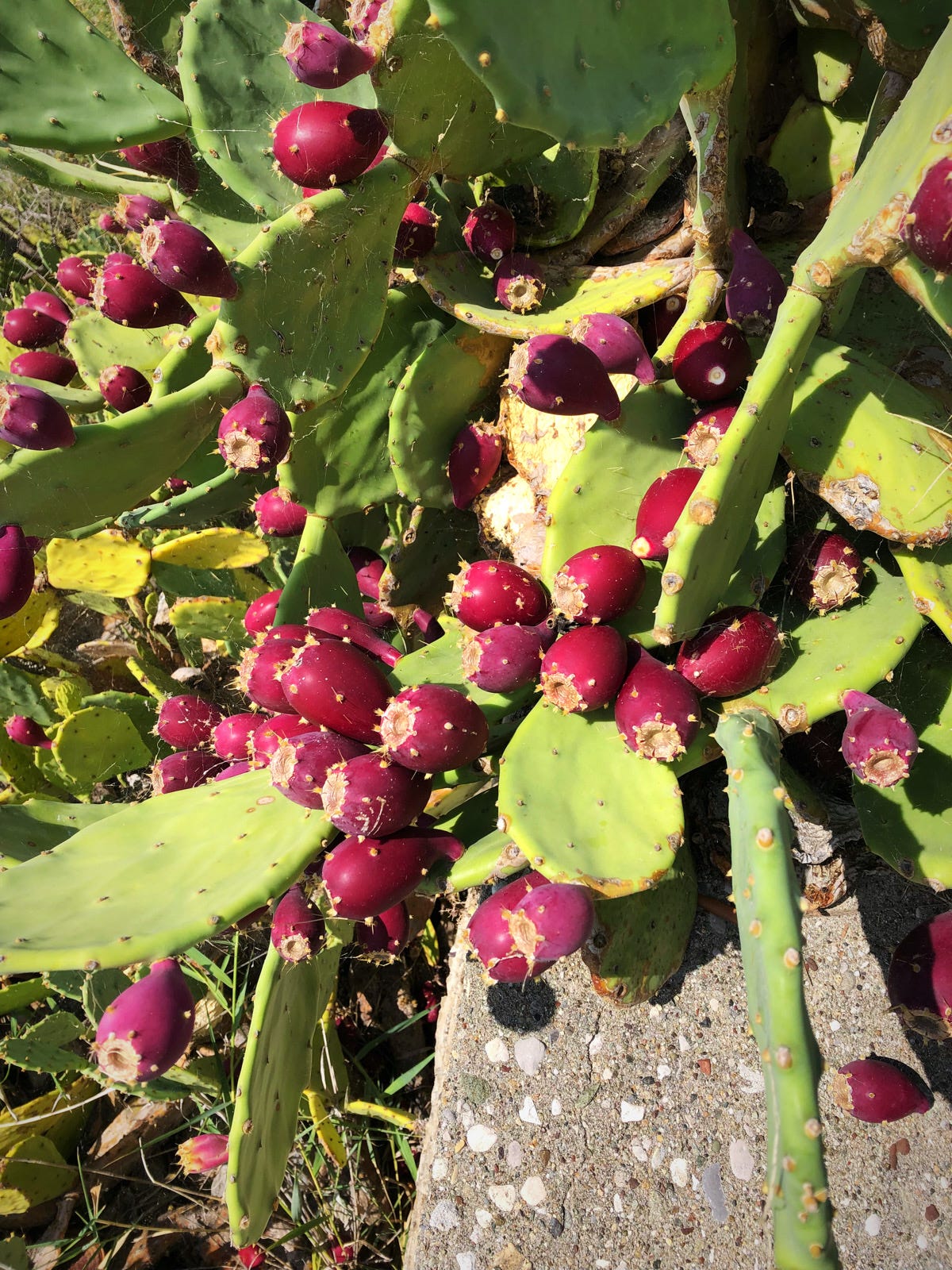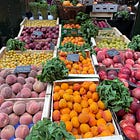Walking with your tastebuds
Harvest your own trail snacks with a spot of foraging
Hello walkers and writers 👋🏻
Since launching The Writer’s Walk, I’ve met the loveliest people and I love that this platform enables me to share some of their stories and adventures with you.
Most recently, I interviewed fellow Substack writer, Barrie Thomson, of
. If you haven’t seen it yet, please check out our chat about walking, finding your best ideas while moving and the super power we can all tap into: encouragement.And *quietly blows own trumpet* Gill Moakes invited me onto the ReWild Your Business podcast to chat about walking and writing, and how my wiggly career took me from running campsites across the UK to running a dive shop in the Caribbean to being a brand writer in That London, to eventually launching The Writer’s Walk.
Coming up soon, I’ll be sharing more chats with artists, authors and all-round good ‘uns, so keep an eye out for more interviews in the next few months. And if you’d like to do a Q&A with me for this newsletter, or want to recommend someone, then please let me know👇🏻
So with the Official Notices done, grab your gardening gloves and your favourite wicker basket and follow me into the woods for a bit of foraging.
Walking
I think the best hiking snacks are the ones you pick along the trail. A ripe brambleberry, plucked from the bush and eaten while it’s still warm from the sun, is one of life’s pleasures. And maybe it’s a combination of all the heavy rain in the UK this year, followed by weeks of sun, but this year’s brambles are the sweetest I’ve ever tasted. And there’s been such an abundance of them that I managed to collect just enough to make a modest batch of jam, while still leaving plenty more on the bushes for birds, animals and other people to enjoy.
People and foraging go together like brambles and apples in a pie. Our hunter-gatherer ancestors lived and ate in tune with the seasons, gathering what they needed as they wandered the landscape1. They were much more connected with nature than most modern humans. They knew each plant and whether it was edible or harmful, and if it could be used as food or medicine. But with the advent of agriculture and industrialisation, modern humans started to lose this connection with nature. The common knowledge that people gained from childhood is now being lost – with some studies suggesting that people in the UK struggle to identify plants and animals.23
Now foraging is on the rise again, and from city streets to country lanes, people are finding their own food out in nature.4 But it’s not without risks or consequences. Excessive foraging can strip areas of the food that animals depend on, and if you don’t know what you’re looking for, you might accidentally harvest a protected or endangered plant – or even a poisonous one. So here are some tips on how to do a forage walk legally, safely and sustainably.
General foraging code
Always forage responsibly and respectfully:
Only harvest wild plants for personal use, never commercial gain.
Take only what you personally need or can use.
Leave plenty for birds, animals and other people to enjoy.
Never uproot, remove or damage plants in order to harvest them.
Check and follow local laws – make sure you have permission to be on the land and consent to forage there.
Pick with care – make sure you identify what you forage so you avoid eating anything poisonous or taking any rare or protected species.
If in doubt, leave it be – if you’re not 100% sure of what something is, leave it where you found it and don’t eat it – take a photo or make a sketch of it instead.
Avoid letting children pick or eat wild food without supervising them.
Here’s some of that in more detail.
Know the local laws
In the UK, all wild plants are protected under the Wildlife and Countryside Act (1981). It can be illegal to forage on private land without the landowner’s consent, and some species have special protections and cannot be taken at all.
Know what to look for
Many plants are pretty but poisonous. That bright red berry or juicy mushroom might come with a toxic surprise. Only take something when you’re 100% sure of what it is.
Do it safely
It’s always best to wash the food you harvest before eating it. And you should avoid foraging around industrial estates, by the side of roads, or areas where there might be pesticides.
Use a foraging guidebook
There’s lots of books on foraging and the good ones cover the history, sustainability and usage of wild plants – often with recipes, too. Look for books and guides that cover the part of the world you live in, or want to forage in.
Walk with an expert forager
I learned about harvesting nettle seeds – and other plants – by volunteering in the medicinal herb garden at my local nature reserve. And I’ve been on 1-2-1 foraging walks with local friends in different parts of the UK and Europe. There are many people and organisations running foraging walks or workshops, so it’s worth seeing what’s going on near you. Extra tip: foraging workshops are often run in large groups and tend to offer plant identification tips with no actual harvesting. Check in advance to avoid disappointment!
Visit a pick-your-own fruit or veg farm
Probably one of the safest ways to harvest your own food. It might not be wild, and you’ll have to pay, but you’ll know what you’re getting! It’s also a great activity to do with kids. One of the highlights of my childhood summers was when my mum and dad would stop the car when we saw a sign for a pick-your-own strawberry farm, and we’d return home with full tummies and an overflowing punnet.
Useful (UK) links
These UK organisations have more info on foraging. If you live elsewhere, please check your local rules and guidance.
I hope these tips and links help you have fun foraging. If you have any others, please share in the comments.
Writing
Your writing prompt this time is a sentence starter – also called a sentence stem. If you’ve not come across this idea before, it’s a word or phrase that starts a sentence, which you then finish off. If you’re ever staring at a blank page, wondering what to write, a sentence starter can help you find your flow.
Try to do this exercise while you’re out foraging and sampling your harvest or, if you wait until you get home, keep your foraged foods close so you can touch, taste and smell them and tap into your senses as you write.
Then try one, or even all, of these sentence starters:
I bit into the [name of the food you foraged] and was transported to…
The [name of the food you foraged] was unexpectedly…
Not many people know this, but [name of the food you foraged] is….
Thanks for reading this edition. Let me know what you foraged and where your writing took you by leaving a comment.
Happy foraging and writing until next time.
Sarah
Support The Writer’s Walk
The Writer’s Walk is free to read but not free to produce. If you’ve been inspired by it, please consider leaving a tip on Ko-fi to help me cover the costs.
Liking, commenting on and sharing this edition is also a great way to show your support. Thank you 💚
More from The Writer’s Walk
If you enjoyed this edition, check out Walking down the aisle for tips on wandering around your local food market in search of something new:
Foraging Communities and Networks, Khan Academy
Fewer children than ever know the names for plants and animals, World Economic Forum






